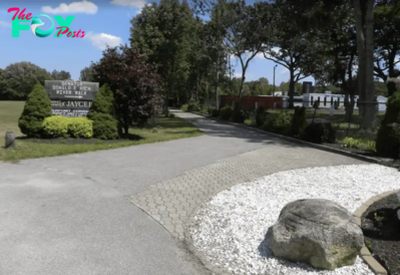Business
Be prepared for harmful algae blooms this summer
Photo: RI DEM
Rhode Islanders Reminded to Be Prepared for Harmful Algae Blooms this Summer and to Avoid Contact with Little Beach at Slack’s Reservoir in Smithfield
With recreational activities on the state’s lakes, ponds, and rivers set to increase in the coming weeks, the Rhode Island Department of Health (RIDOH) and the Rhode Island Department of Environmental Management (DEM) are reminding Rhode Islanders to be on the lookout for harmful algae blooms (HABs).
In freshwaters, the blooms are caused by blue-green algae, also known as cyanobacteria, which are naturally present in bodies of water. Increased temperatures, slow moving water, and excessive amounts of nutrients cause the cyanobacteria to grow excessively and create potential for harmful blooms. These HABs are capable of producing toxins, which have the potential to negatively impact humans and animals.
Initial site visits late last week indicated that Little Beach at Slack Reservoir in Smithfield is experiencing a harmful algae bloom.
RIDOH and DEM work collaboratively to screen and respond to conditions indicating a harmful algae bloom is in progress and issue recreational advisories when thresholds are met. During an algae bloom, all recreation including swimming, fishing, boating, and kayaking should be avoided. People also should not ingest untreated water or eat fish from affected water bodies. Pets can also be affected by harmful algae blooms, so owners should not allow pets to drink or swim in this water. State and local officials work to post warnings around bodies of water when HABs are present. However, members of the public should be on the lookout for these harmful blooms and know to avoid affected waters, should they encounter a bloom before warnings have been posted.
Affected waters may be bright to dark green in color and have dense, floating algal mats on the water’s surface. The water may look like green paint, thick pea soup, or green cottage cheese. Should these conditions be observed, it is best to refrain from contact with the water and keep Pets from entering the water.
Skin contact with water containing blue-green algae can cause irritation of the skin, nose, eyes, and/or throat. Common health effects associated with ingesting water containing blue-green algae include stomachache, diarrhea, vomiting, and nausea. Rarer health effects include dizziness, headache, fever, liver damage, and nervous system damage. Young children and pets are at particular risk for health effects associated with harmful algae blooms, because they are more likely to swallow water when in or around bodies of water.
If you come into contact with water affected by a harmful algae bloom, rinse your skin with clean water as soon as possible and, when you get home, take a shower and wash your clothes. If your pet comes into contact with the water, immediately wash your pet with clean water. Do not let the animal lick algae off its fur. Call a veterinarian if your animal shows any symptoms of blue-green algae poisoning including loss of energy, loss of appetite, vomiting, diarrhea, or any unexplained sickness that occurs within a day or so after being in contact with water. People who have had contact with water with algae blooms and who experience the symptoms described above should contact a healthcare provider.
To report suspected blue-green algae blooms, contact DEM’s Office of Water Resources at 401-222-4700 or [email protected] and if possible, send a photograph of the reported algae bloom. For a list of current advisories, visit: www.dem.ri.gov/bluegreen
-

 Business13m ago
Business13m agoU.S. Antitrust Regulators Seek to Break Up Google, Force Sale of Chrome Browser
-

 Business13m ago
Business13m agoSuccessful White Men Alone Can’t Create America’s Economic Future
-

 Business5h ago
Business5h agoThe Rise of Silent Services
-

 Business16h ago
Business16h agoTim Latimer
-

 Business1d ago
Business1d agoCarbon offsets can help bring energy efficiency to low-income Americans − our Nashville data shows it could be a win for everyone
-

 Business1d ago
Business1d agoWorkplace diversity training programs are everywhere, but their effectiveness varies widely
-

 Business1d ago
Business1d agoFirm bosses urged to make use of Welsh language to revitalise rural economic system
-

 Business2d ago
Business2d agoDonor-advised funds are drawing a lot of assets besides cash – taking a bigger bite out of tax revenue than other kinds of charitable giving



























